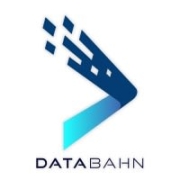Observability Pipeline Software efficiently processes data from various sources, ensuring improved monitoring and troubleshooting capabilities in complex environments. It is crucial for operations teams looking to streamline data flow and gain insights into systems' performance.
The software enables real-time data collection and analysis, essential for identifying and addressing system issues quickly. It supports automation and scalability, allowing seamless integration with existing IT infrastructures. Users find value in this solution's ability to centralize monitoring, optimize resources, and enhance the overall efficiency of IT operations.
What are the critical features of this solution?
What are the benefits or ROI to consider?
Industries such as finance, healthcare, and e-commerce have implemented Observability Pipeline Software to manage their complex IT environments. These sectors benefit significantly from real-time data visibility, allowing them to maintain optimal performance, compliance, and customer satisfaction.
Enhancing monitoring capabilities through an observability pipeline equips organizations with the tools necessary to manage increasingly complex IT systems efficiently. It is indispensable for businesses wanting to maintain a competitive edge in a rapidly changing technological landscape.



















Observability Pipeline Software optimizes data flow by transforming, filtering, and routing telemetry data efficiently. You can eliminate unnecessary data at the source, thus reducing noise and storage costs. It enables you to tailor data feeds to specific monitoring and analysis needs, ensuring only relevant information reaches your data processing systems, and therefore enhancing visibility into your IT ecosystem.
What are the key benefits of using Observability Pipeline Software?Using Observability Pipeline Software provides several key benefits, including enhanced data quality through filtering and transformation processes, and improved cost efficiency by reducing data volume before it reaches downstream systems. It also allows for customization and scaling based on specific business needs, making it easier to manage large volumes of data from diverse sources and prioritize critical alerts for faster troubleshooting.
Why is Observability Pipeline Software important for cloud-native environments?In cloud-native environments, where applications are highly dynamic and distributed, Observability Pipeline Software plays a crucial role by providing a comprehensive overview of your infrastructure. It helps in managing the complexity by consolidating and standardizing data collected from various microservices, ensuring you have real-time insights to maintain performance and reliability. This software allows you to adapt quickly to infrastructure changes and maintain system health.
What features should you look for in Observability Pipeline Software?When selecting Observability Pipeline Software, look for features such as data transformation capabilities, extensibility through integrations with existing IT and data management tools, and support for multiple data formats. Intelligent filtering and enrichment options are essential, as are robust security features to manage sensitive information. Consider scalability to accommodate future growth and a user-friendly interface for easy deployment and management.
How does Observability Pipeline Software integrate with existing systems?Integrating Observability Pipeline Software with existing systems typically involves API integrations, or using pre-built connectors that facilitate smooth data passage. This software is designed to work with popular monitoring and logging tools, allowing you to centralize and streamline data processing. The integration reduces duplicate efforts and ensures your team has access to unified, actionable insights across different platforms, aiding in maintaining performance and security across your infrastructure.